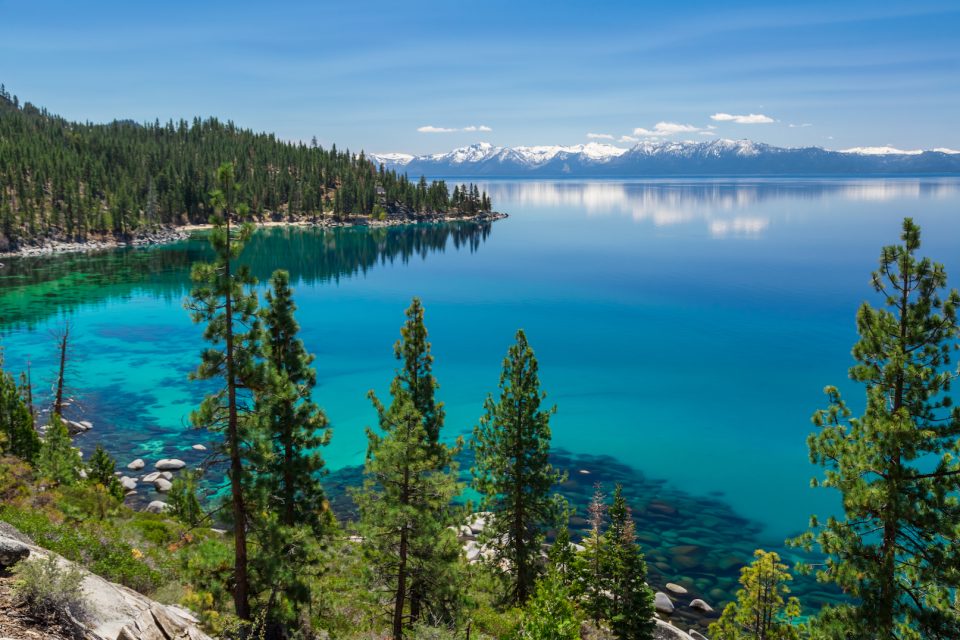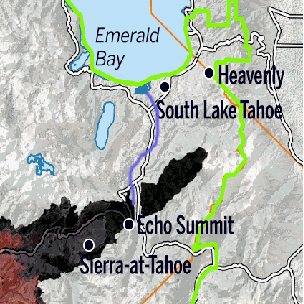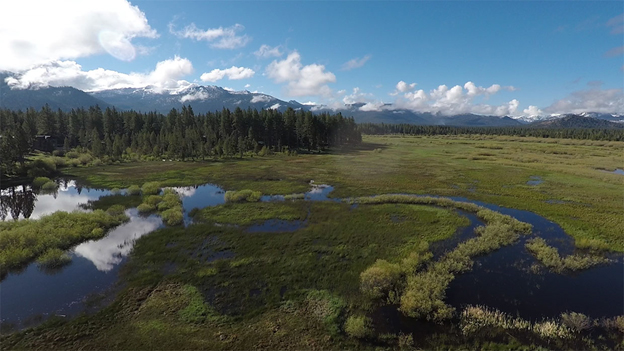Effects of Caldor Fire on Lake Tahoe Study
Boons Baythavong1
Lake Tahoe is known around the world for its water clarity and cobalt blue color. Historically, clarity averaged about 100 feet. A development boom in the mid‐20th century brought about unintended environmental impacts, including reduction of the lake’s pristine clarity. For decades, researchers have been documenting changes in the lake and the research has informed policymakers and stakeholders on management strategies to protect the lake and stabilize its decline in clarity.

Currently, Lake Tahoe is experiencing a phenomenon known as cultural eutrophication—excessive algal growth due to excessive nutrient levels. Nitrogen (N) and phosphorous (P) are the most important nutrients limiting plant growth in terrestrial and aquatic ecosystems. While moderate to high levels of available nitrogen and phosphorous in soil are desirable for crop and pasture production, high levels of soluble N and P in aquatic ecosystems often lead to excessive growth of algae and other plants, which can reduce oxygen levels and kill fish as plants die and decompose. Nitrogen and phosphorus from automobile emissions, fertilizers and stormwater runoff empty into Lake Tahoe. Recently, the Caldor Fire that burned through Echo Summit toward South Lake Tahoe in August 2021 will contribute excess nitrogen and phosphorous into Lake Tahoe.
Although the role of fire has been studied in some wetland vegetation types, such as those occurring in the Everglades (Richardson 2010), existing knowledge of fire effects is limited for many wetland plant communities. We will not know the effects of the Caldor Fire on Lake Tahoe until Spring 2022 when the snow melts and carries nitrogen and phosphorous into nearby creeks and streams, through the Upper Truckee River, into the Truckee Marsh and eventually emptying into Lake Tahoe.

We currently have water quality sampling data at the Upper Truckee River before the Upper Truckee Marsh, collected before the Caldor Fire as a baseline.

Watershed-wide effects of fire on sediment and nutrient inputs have been studied extensively, but the specific effects of riparian or wetland burning on freshwater ecosystems, including organic matter loading, biogeochemical cycles, light and temperature levels, and ultimately, the aquatic biota, have rarely been delinated (Cooper et al. 2015). We plan to continue monitoring the nitrogen and phosphorous levels at the Upper Truckee River. We will also monitor those levels north of the Upper Truckee Marsh where the river enters Lake Tahoe.
The Upper Truckee River used to terminate in the marsh. Since construction of the Tahoe Keys, the channelized river runs straight into the lake, along with sediment and other non-point source pollutants. The Upper Truckee Marsh used to act as a filter before the water drained into Lake Tahoe. After the Tahoe Keys were developed and allowed the river to enter directly into the Lake, it took away half to two thirds of the natural filtration system for the lake and then added all the pollution from an airport and the Tahoe Keys.
